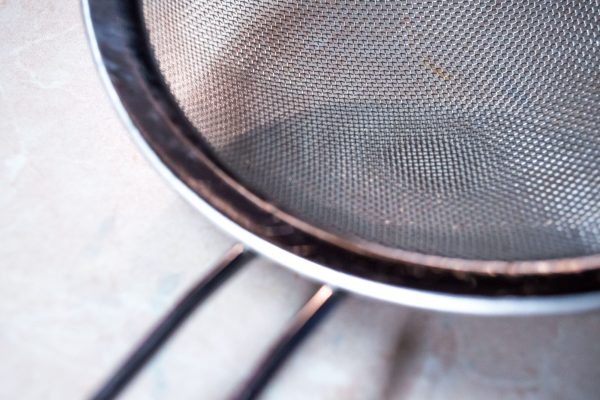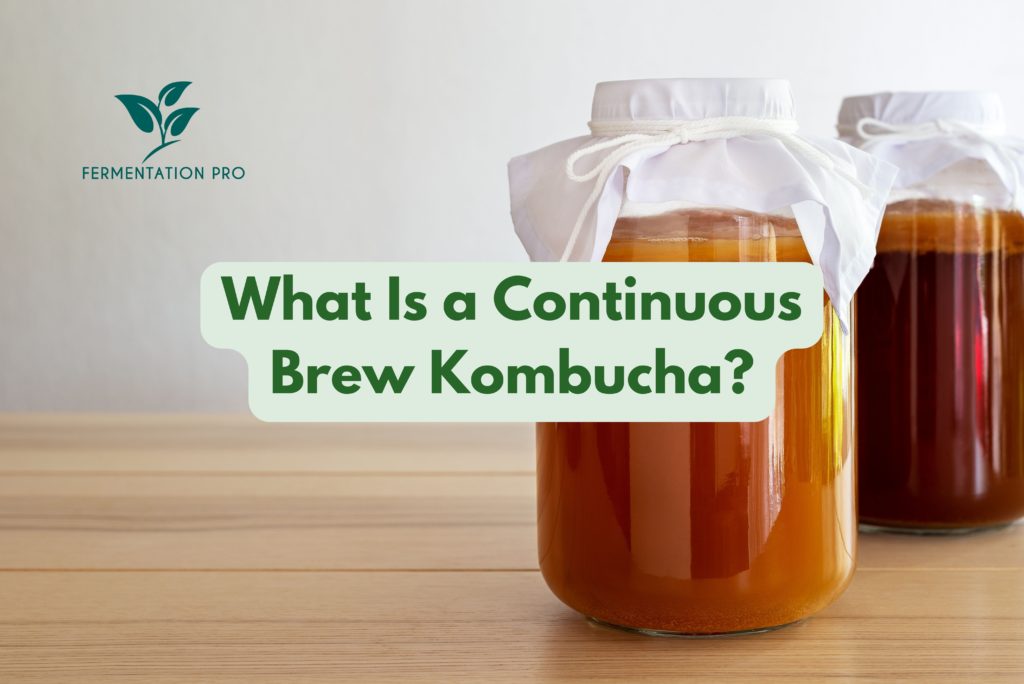If there is one thing about Kombucha that people usually don’t enjoy, it is probably the sediments or floating gunks in the Kombucha liquid. Because of this, it is not surprising that many new and experienced Kombucha drinkers like to filter their Kombucha before bottling or drinking.
But the question is, should you strain your Kombucha at all? Well, actually, it’s up to your personal preference. Let us explain.
Kombucha sediments are often composed of SCOBY babies. They come in different shapes, sizes, and colors that can go from light to dark shades. They also have a slimy and chewy texture and a subtle sour to earthy note. For the most part, these sediments are safe to drink and pose no adverse side effects to the drinker. Hence, straining Kombucha is not necessary at all. However, due to their appearance and texture, some people feel more comfortable removing these sediments from the liquid. If you are one of these people, then you should definitely strain your Kombucha as well.
Straining Kombucha is not difficult at all. There are some important things that you need to know first before straining your healthy drink. In this article, we will tackle all the necessary information and tips to strain your Kombucha properly. Without further adieu, let’s jump into it!
Table of Contents
Should I Filter My Kombucha Before Bottling?
As we have mentioned above, straining Kombucha is not necessary because Kombucha sediments are safe to ingest. However, if you have extra time to strain your Kombucha, you may want to do it before bottling. Here’s why.
Filtering the Kombucha sediments before bottling can give your Kombucha brew better quality, appearance, taste, and texture. Below we discuss the advantages of straining Kombucha before bottling in more detail.
- May improve the quality of Kombucha
Straining Kombucha before bottling can reduce the volatility of the brew and lessen the yeast content. With less volatility and excess yeast, you can make Kombucha that has consistent taste across batches and less yeasty and acidic flavor.
- Makes Kombucha appearance more appealing to newbie drinkers
Newbie Kombucha drinkers often get grossed out when they see the floating Kombucha gunks in their healthy drink. Hence, if you are brewing Kombucha for other people who are not yet familiar with Kombucha, we highly recommend to strain your Kombucha before bottling. This can make the Kombucha look clearer and make the drinking experience less shocking.
- Improves the Kombucha’s taste and texture
Yes, you’ve read that right. Straining your Kombucha before bottling can make the Kombucha more palatable especially for new Kombucha drinkers. Straining the Kombucha removes the excess yeast that causes the harsh tang and acidity of Kombucha. Reducing the yeast can also increase consistency in the taste of your final brews.
Filtering the sediments is also helpful for introducing Kombucha to people who are sensitive to different textures. By straining your Kombucha, you can remove the slimy chewy sediments that may cause discomfort.
How to Filter Kombucha Before Bottling
Filtering your Kombucha before bottling is relatively easy but you will certainly need patience. Before we walk you through the steps in filtering Kombucha, here are the straining tools that you can use.
- Funnel and mesh cloth
- Coffee filter
- Sieve
Once you’ve chosen your straining tool, let’s start straining your Kombucha.
Step #1. Set up your chosen straining tool

To use a funnel and mesh cloth, simply place the mesh cloth on the mouth of your bottle and insert the funnel pushing the mesh cloth down the bottle neck securing it. You can also choose to place the mesh cloth over the funnel depending on your preference.
Using a coffee filter can be a little trickier than using a funnel and mesh cloth because it is not as steady as the funnel and it doesn’t fit snugly over the bottle’s mouth. To use this tool for straining Kombucha, simply put it over the bottle openings. You may ask someone to hold the coffee filter to make the task easier and avoid mess.
A common kitchen sieve is another good tool for straining your Kombucha. However it can be less effective in straining if you are using a large sieve that has wide holes. If your sieve has wide holes that can’t filter Kombucha sediments, we suggest placing a mesh cloth over your sieve for better filtration. To use this you will need to strain your Kombucha in a large mouthed vessel or a bowl and transfer the liquid to the bottles afterward. This method is effective in removing the Kombucha sediments however it may result in carbonation loss.
Step #2. Pour the Kombucha directly into the bottles
Pour your Kombucha into the bottle and strain the Kombucha sediments. If your bottles are unsteady, we recommend asking for additional help to avoid spills and mess.
Fill your bottles with Kombucha leaving some headspace between the top of the bottle and the surface of the liquid for carbonation. According to Fermentaholics blog, this headspace should measure about one inch from the top.
Step #3. Remove your straining tools and seal your bottles
After straining, don’t forget to seal your bottles tightly to ensure good carbonation. Make sure to use an airtight cap for best results.
What to Do With Filtered Kombucha Sediments
Just like the first fermentation, the longer you brew your Kombucha during the second fermentation will make it more acidic and tarter.
Filtered Kombucha sediments are mostly SCOBY babies or parts of the You can use SCOBY babies the same way you can use a SCOBY. You can use it for recipes like soups, candies, smoothies, and many more. Furthermore, SCOBYs can be used as fertilizers for your houseplants or as treats to your pets. You may also give them to your friends or family members who want to start brewing their own Kombucha at home.
How to Avoid Kombucha Sediments During Second Fermentation
During the second fermentation, your Kombucha can still develop SCOBY babies or sediments even if you have already filtered it because the liquid itself is already filled with yeast and bacteria that can continue fermentation. The best thing you can do to avoid Kombucha sediments during the second fermentation. This is apart from straining the Kombucha is to use bottled fruit juices for flavorings.
Bottled fruit juices are more refined and don’t contain pulps that can affect Kombucha’s texture. By using this flavoring, you can have Kombucha that has less residues and sediments. However, using fruit juices may affect the taste of your finished Kombucha or drive the fermentation longer. In some cases, it may affect the carbonation of the Kombucha.
Should I Push My SCOBY Down?
SCOBYs can settle at the bottom, middle or top of your brew. The position of the SCOBY is not necessarily an indicator for the SCOBYs health.
Sometimes, the SCOBY settles at the bottom and starts to float after some days. This is a good sign that your Kombucha is fermenting well. The yeasts and bacteria in the brew are actively producing their byproducts like carbon dioxide. The carbon dioxide produced tends to push the SCOBY towards the surface of the brew.
If there is abundant carbon dioxide, the SCOBY may be pushed to the surface of the brew. When the SCOBY is pushed on the surface of the brew and exposed to air, the SCOBY can dry out. It loses the protection from the acidity of Kombucha liquid making it prone to molds and contamination. In this instance, you should push your SCOBY down and let it submerge to the liquid. You don’t need to push it to the bottom, just make sure that it is covered by the liquid.
Just a quick reminder, do not push down the SCOBY by your bare hands, we suggest using a wooden spoon to push the SCOBY down. You may also use a metal utensil but we strongly suggest only using utensils made of stainless steel.

Can You Strain Kombucha With a Metal Strainer?
You’ve probably already heard that metal reacts with the acidity of Kombucha. While that is true and is proven by science, straining Kombucha with a metal strainer can be considered safe.
The notion that metal is bad for Kombucha is just a general approach. Not all metals are built the same and can leach toxins into the brew. Additionally, straining your Kombucha in a metal strainer will just cause temporary contact that only lasts for less than a minute or two. This short time is not enough for the Kombucha’s acidity to leach the metal.
But before you strain your Kombucha with any metal strainer you find in your kitchen, take note that the only kind of metal strainer that you can use is one that is made with high quality stainless steel. This is because stainless steel is non corrosive making it suitable for brewing acidic beverages like Kombucha.
Do You Drink the Sediment in Kombucha?
If you don’t mind the slimy floating gunks and the chewy texture of the Kombucha sediments, then you can definitely drink them along with the Kombucha liquid. Kombucha sediments in bottled Kombucha are safe to drink. They are made up of bacteria that are good for your gut and general health. Furthermore, they are not hard to eat at all. They have a subtle sour or earthy taste and slimy or chewy texture and are easily washed down by the Kombucha liquid.
While drinking the Kombucha sediments sounds like the right thing to do healthwise, remember that you are not required to drink it if you are uncomfortable. The Kombucha liquid is already filled with beneficial bacteria for your body so you won’t miss out on the amazing health benefits of Kombucha.
If you want to remove the Kombucha sediments before drinking, simply use a strainer, mesh cloth, or coffee filter to separate the sediments and the liquid. You can also pour the Kombucha into a glass and remove the sediments by using a spoon. Additionally, you can just simply pour the Kombucha slowly to another container and leave the Kombucha sediments behind, however this trick may not work all the time.
For the most part, the Kombucha sediments just serve as a visual sign that the Kombucha is raw and has undergone fermentation properly.
While drinking the Kombucha sediments sounds like the right thing to do healthwise, remember that you are not required to drink it if you are uncomfortable. The Kombucha liquid is already filled with beneficial bacteria for your body so you won’t miss out on the amazing health benefits of Kombucha.
If you want to remove the Kombucha sediments before drinking, simply use a strainer, mesh cloth, or coffee filter to separate the sediments and the liquid. You can also pour the Kombucha into a glass and remove the sediments by using a spoon. Additionally, you can just simply pour the Kombucha slowly to another container and leave the Kombucha sediments behind, however this trick may not work all the time.
For the most part, the Kombucha sediments just serve as a visual sign that the Kombucha is raw and has undergone fermentation properly.








